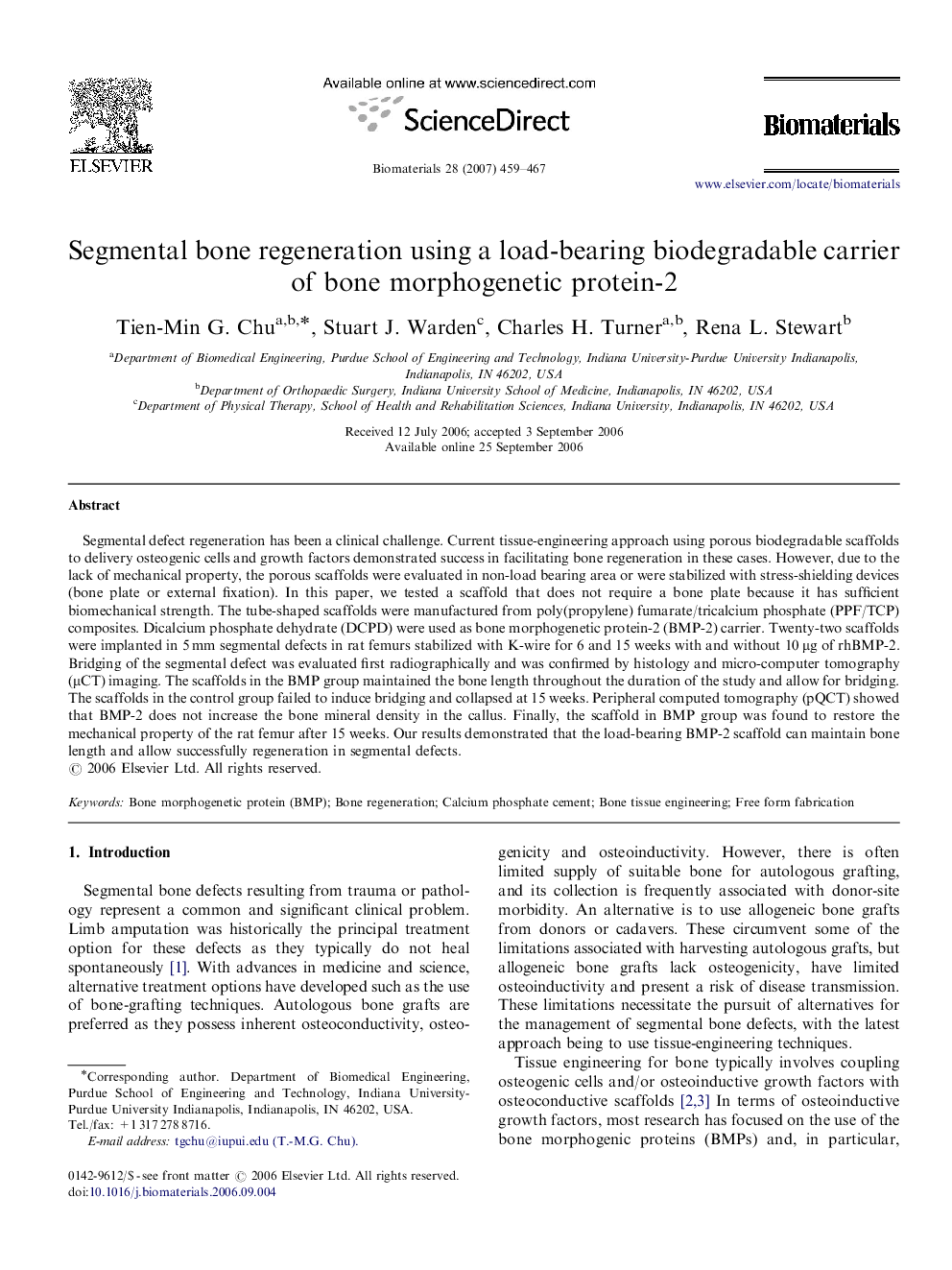| Article ID | Journal | Published Year | Pages | File Type |
|---|---|---|---|---|
| 11514 | Biomaterials | 2007 | 9 Pages |
Segmental defect regeneration has been a clinical challenge. Current tissue-engineering approach using porous biodegradable scaffolds to delivery osteogenic cells and growth factors demonstrated success in facilitating bone regeneration in these cases. However, due to the lack of mechanical property, the porous scaffolds were evaluated in non-load bearing area or were stabilized with stress-shielding devices (bone plate or external fixation). In this paper, we tested a scaffold that does not require a bone plate because it has sufficient biomechanical strength. The tube-shaped scaffolds were manufactured from poly(propylene) fumarate/tricalcium phosphate (PPF/TCP) composites. Dicalcium phosphate dehydrate (DCPD) were used as bone morphogenetic protein-2 (BMP-2) carrier. Twenty-two scaffolds were implanted in 5 mm segmental defects in rat femurs stabilized with K-wire for 6 and 15 weeks with and without 10 μg of rhBMP-2. Bridging of the segmental defect was evaluated first radiographically and was confirmed by histology and micro-computer tomography (μCT) imaging. The scaffolds in the BMP group maintained the bone length throughout the duration of the study and allow for bridging. The scaffolds in the control group failed to induce bridging and collapsed at 15 weeks. Peripheral computed tomography (pQCT) showed that BMP-2 does not increase the bone mineral density in the callus. Finally, the scaffold in BMP group was found to restore the mechanical property of the rat femur after 15 weeks. Our results demonstrated that the load-bearing BMP-2 scaffold can maintain bone length and allow successfully regeneration in segmental defects.
